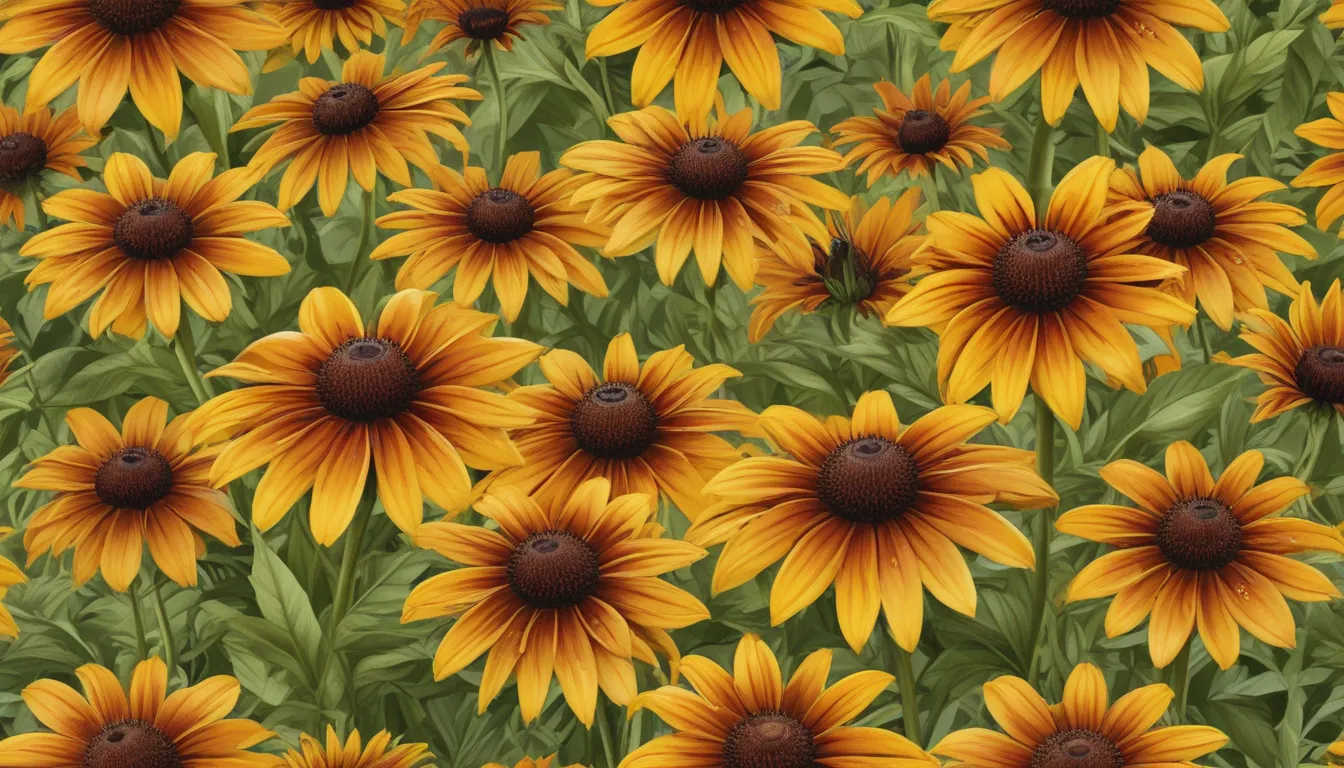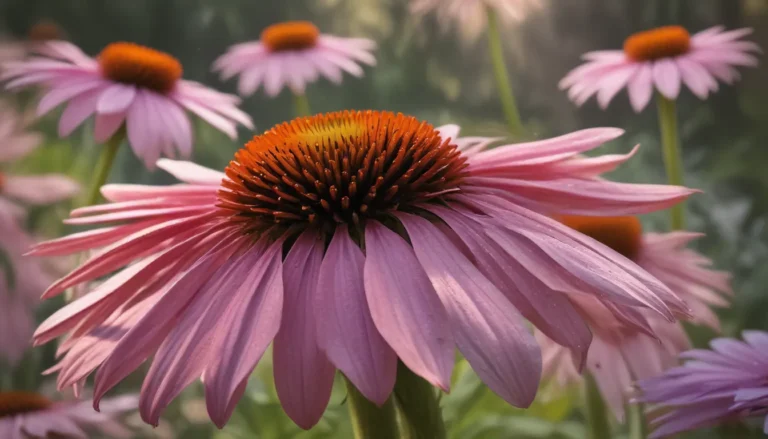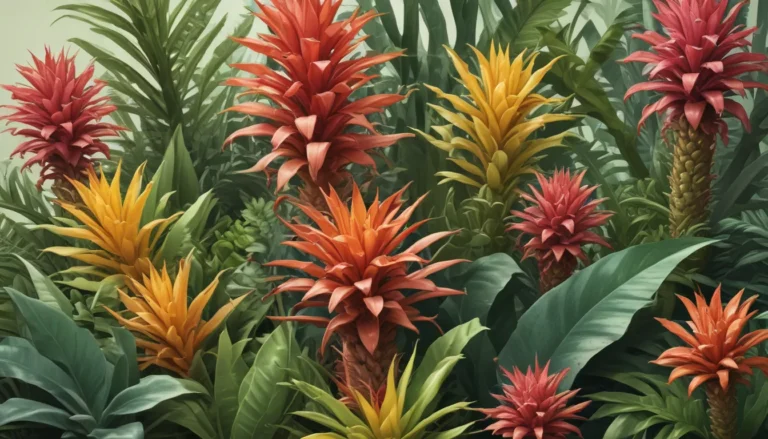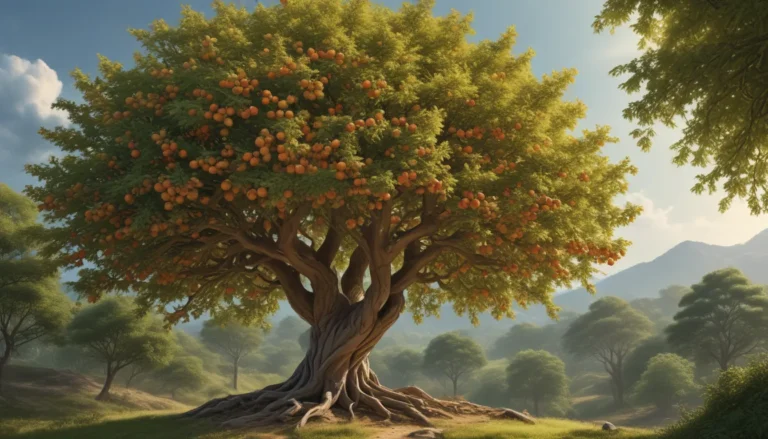The pictures we use in our articles might not show exactly what the words say. We choose these pictures to make you interested in reading more. The pictures work together with the words but don’t take their place. The words still tell you the important facts.
Rudbeckia, commonly known as coneflower or black-eyed Susan, is a captivating genus of plants that grace gardens with their vibrant and cheery blooms. Native to North America, these hardy perennials are not just visually appealing but also hold a wealth of fascinating characteristics that make them truly remarkable.
A Closer Look at Rudbeckia
Rudbeckia, also known as the Black-Eyed Susan, is a popular member of the sunflower family. With its striking yellow or orange petals and dark brown center, Rudbeckia adds a burst of color to any landscape. Let's dive into some intriguing facts about this beautiful plant that will deepen your appreciation for its beauty and significance.
The History Behind Rudbeckia
Rudbeckia is named after the renowned Swedish botanist, Olof Rudbeck the Younger, in recognition of his contributions to the field of botany. With over 20 known species, including Rudbeckia hirta, Rudbeckia fulgida, and Rudbeckia laciniata, Rudbeckia offers a variety of sizes, colors, and growth habits to choose from.
Native Roots and Symbolism
Native to North America, Rudbeckia thrives in various habitats, from grasslands to woodlands. Beyond its visual appeal, Rudbeckia symbolizes encouragement and motivation, making it a popular choice for conveying positive energy through gifts and bouquets.
Environmental Benefits and Medicinal Uses
Rudbeckia's nectar-rich flowers attract pollinators like bees and butterflies, contributing to ecosystem health. Additionally, Native American tribes have used Rudbeckia for its medicinal properties, believing in its anti-inflammatory and antimicrobial benefits.
The Growing Appeal of Rudbeckia
Rudbeckia's popularity extends beyond its aesthetics, thanks to its easy-to-grow nature and resilience. Let's delve into some practical aspects of cultivating and enjoying these delightful plants in your garden.
Low-Maintenance Charm
Rudbeckia is a resilient plant that thrives in a wide range of climates and soil conditions, making it an ideal choice for both novice and seasoned gardeners. It requires minimal care, flourishes in full sun, and tolerates drought well.
Self-Seeding Beauty
Once established, Rudbeckia can self-seed with ease, producing abundant seeds that naturally spread and germinate. This characteristic makes it a valuable addition to naturalistic or wildflower gardens, providing a continuous display of blooms.
Blooming Brilliance
From summer to fall, Rudbeckia graces landscapes with its colorful blooms, creating a vibrant spectacle that lasts for months. Its long-lasting flowers are not only visually appealing but also ideal for cut flower arrangements.
Wildlife-Friendly Features
Rudbeckia's bitter-tasting foliage deters deer and rabbits, making it a practical choice for gardens in areas with high populations of these foraging animals. Its ability to attract beneficial insects adds to its ecological value.
Exploring Diverse Applications of Rudbeckia
Beyond its ornamental and ecological benefits, Rudbeckia offers a range of creative and practical uses that further enhance its appeal in various settings. Let's explore some interesting applications of this versatile plant.
Collecting Seeds for Future Growth
By allowing Rudbeckia flowers to mature and dry on the plant, you can easily harvest seeds for future plantings. These seeds can be stored, shared, or used to propagate new plants, ensuring a continuous supply of Rudbeckia blooms.
Companion Planting Benefits
Planting Rudbeckia alongside other flowering plants, vegetables, or herbs promotes biodiversity in your garden. By attracting beneficial insects and repelling pests, Rudbeckia serves as a valuable companion plant that enhances overall garden health.
Herbal Tea Delights
The leaves and petals of Rudbeckia can be dried and used to create calming herbal teas with soothing properties. Adding Rudbeckia to your herbal tea collection provides a unique and flavorful option for relaxation and enjoyment.
Maryland’s Floral Emblem: Rudbeckia in Focus
Since 1918, Rudbeckia hirta has been the state flower of Maryland, symbolizing the state's natural beauty and heritage. Maryland residents and visitors alike recognize Rudbeckia as a cherished floral emblem that reflects the region's cultural significance and botanical richness.
Conclusion: Embracing the Allure of Rudbeckia
Rudbeckia's charm lies not only in its vibrant blooms but also in its rich history and diverse characteristics that appeal to a wide range of enthusiasts and nature lovers. By exploring the world of Rudbeckia, we gain a deeper appreciation for the intricate beauty of nature and the wonders that botanical diversity brings to our lives.
Next time you encounter a Rudbeckia plant, take a moment to admire its stunning petals and reflect on the captivating facts that make it a truly exceptional species. Whether you're a gardening enthusiast, a nature lover, or simply someone who appreciates the beauty of flowers, Rudbeckia is sure to leave a lasting impression on your heart and mind.
FAQs: Unraveling Common Queries about Rudbeckia
- How long do Rudbeckia flowers bloom?
-
Rudbeckia flowers typically bloom from early summer to fall, providing a burst of color in the garden for several months.
-
Are Rudbeckia plants easy to grow?
-
Yes, Rudbeckia plants are generally easy to grow and suitable for both beginners and experienced gardeners. They thrive in well-drained soil and require moderate watering.
-
Can Rudbeckia attract pollinators?
-
Absolutely! Rudbeckia flowers are known to attract a variety of pollinators, including bees, butterflies, and hummingbirds, supporting local ecosystem health.
-
Are there different types of Rudbeckia?
-
Yes, various species and cultivars of Rudbeckia offer unique characteristics. Popular varieties include Rudbeckia fulgida, Rudbeckia hirta, and Rudbeckia laciniata.
-
Can Rudbeckia be used for medicinal purposes?
- Yes, some Native American tribes have traditionally used Rudbeckia for medicinal purposes, such as treating respiratory ailments and snakebites. It's advisable to consult a healthcare professional before using any plant for medicinal use.
Delve deeper into the enchanting world of Rudbeckia and uncover extraordinary details about its remarkable species and cousins. Explore the incredible traits of Gloriosa Daisy and the captivating allure of Black-Eyed Susan, each offering a unique charm that will enrich your botanical knowledge and admiration for these fascinating plants.
Was this information helpful?
Our dedication to providing informative and engaging content is reflected in the diverse insights and contributions from real users like you. Every fact on our site undergoes thorough review by our expert editors to ensure accuracy and authenticity. Trust in our commitment to quality as you explore, learn, and discover new wonders with us.






